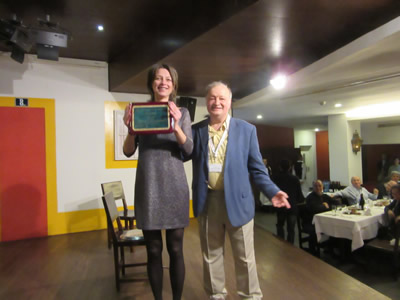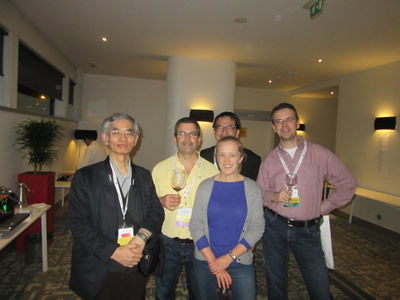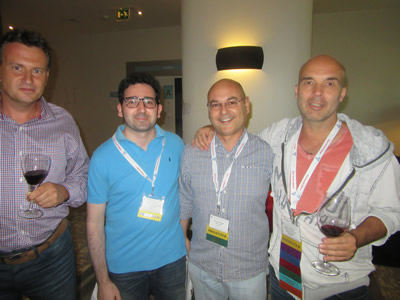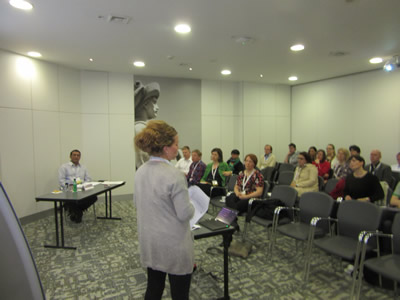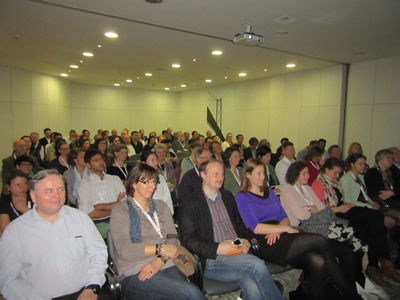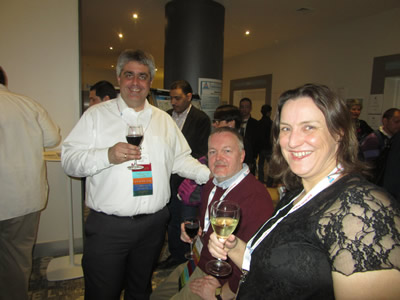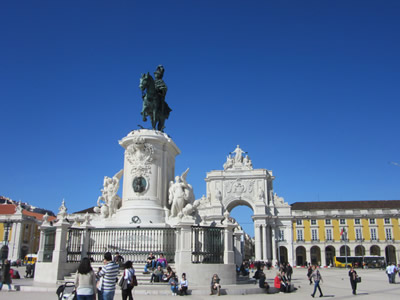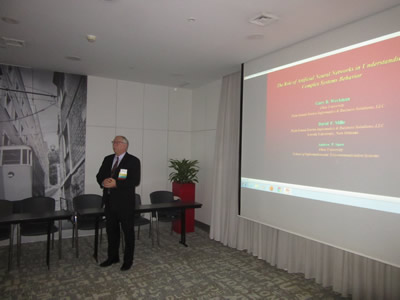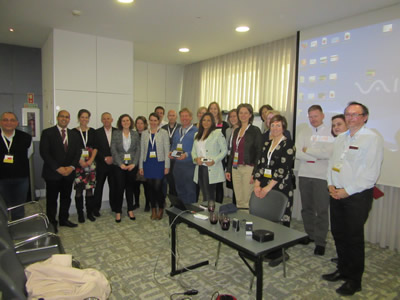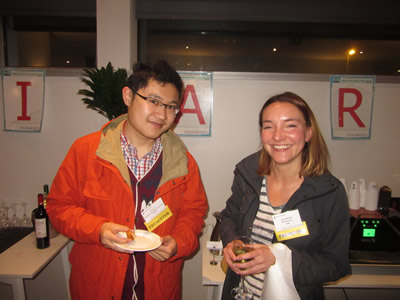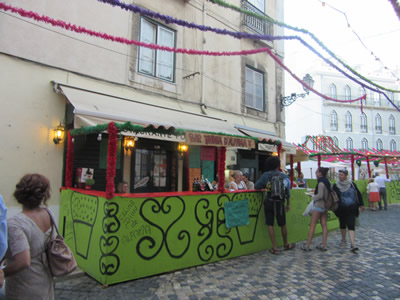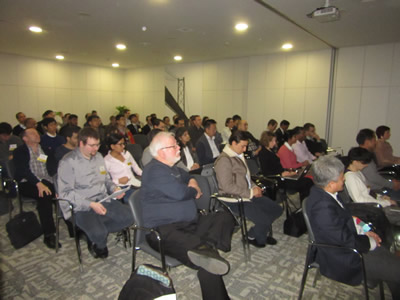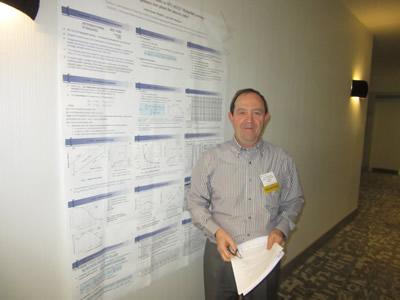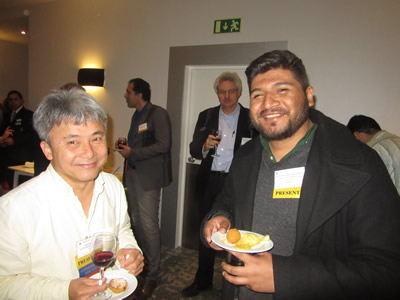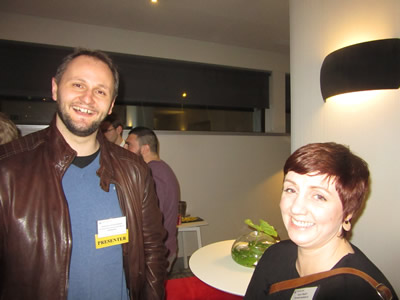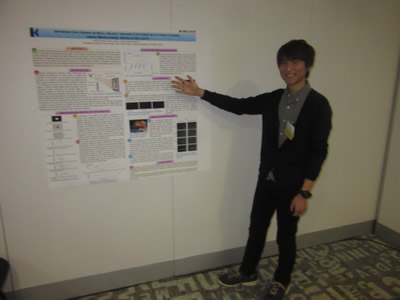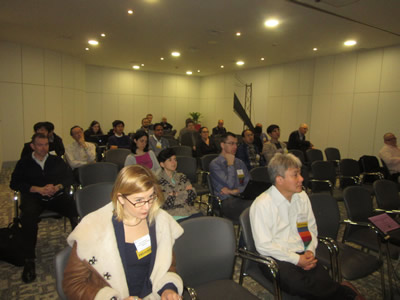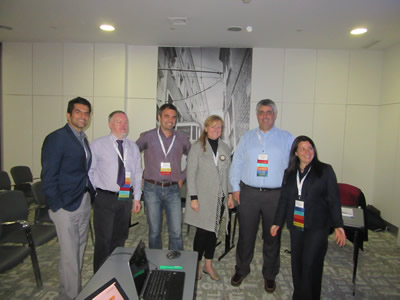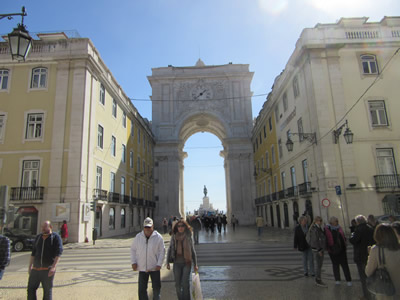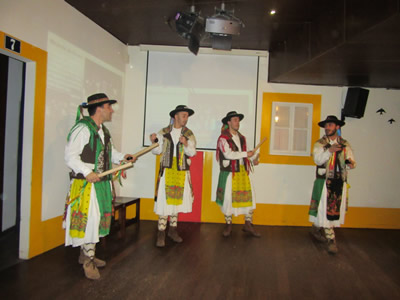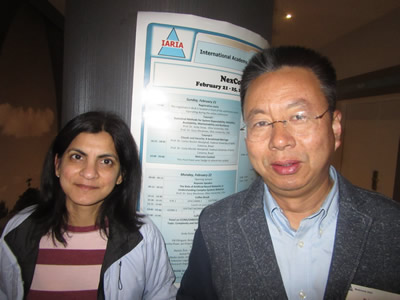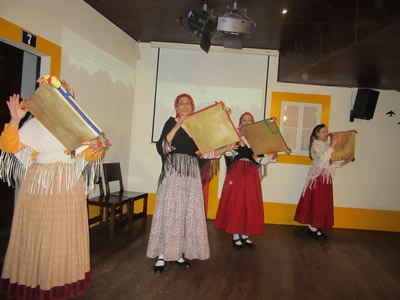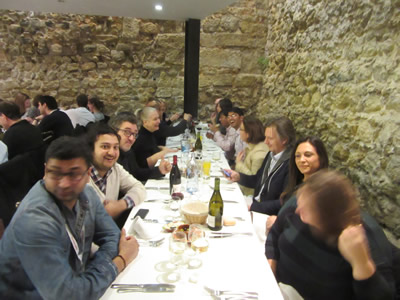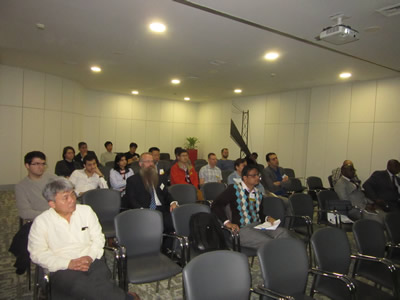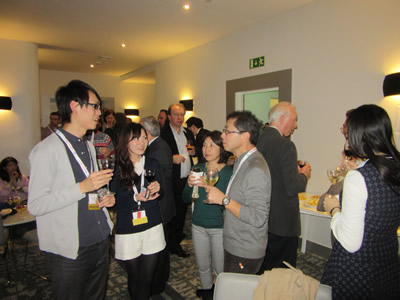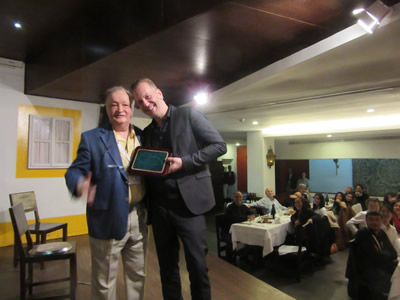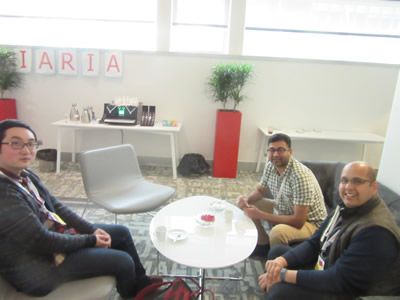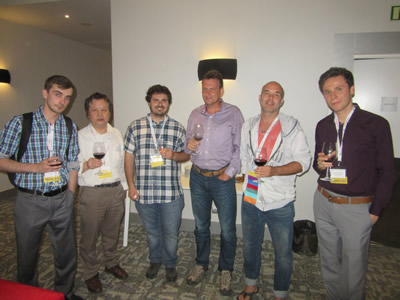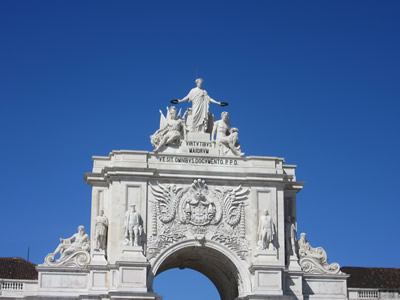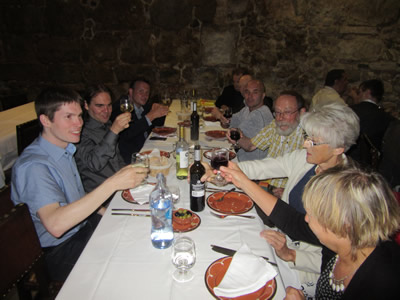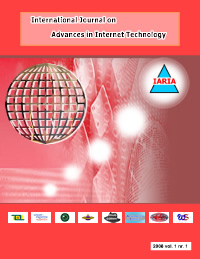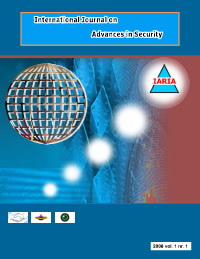INTERNET 2025 - The Seventeenth International Conference on Evolving Internet
March 09, 2025 - March 13, 2025
INTERNET 2025
Onsite and Online Options: In order to accommodate various situations, we are offering the option for either physical presence or virtual participation (pdf slides or pre-recorded videos).
ISSN: 2308-443X
ISBN: 978-1-68558-234-0
INTERNET 2025 is colocated with the following events as part of InfoWare 2025 Congress:
- ICCGI 2025, The Twentieth International Multi-Conference on Computing in the Global Information Technology
- ICWMC 2025, The Twenty-First International Conference on Wireless and Mobile Communications
- VEHICULAR 2025, The Fourteenth International Conference on Advances in Vehicular Systems, Technologies and Applications
- INTERNET 2025, The Seventeenth International Conference on Evolving Internet
- COLLA 2025, The Fifteenth International Conference on Advanced Collaborative Networks, Systems and Applications
- INTELLI 2025, The Fourteenth International Conference on Intelligent Systems and Applications
- VISUAL 2025, The Tenth International Conference on Applications and Systems of Visual Paradigms
- HUSO 2025, The Eleventh International Conference on Human and Social Analytics
- BRAININFO 2025, The Tenth International Conference on Neuroscience and Cognitive Brain Information
INTERNET 2025 Steering Committee
|
 |
Renwei (Richard) Li
Southeast University
China
|
|
 |
Eugen Borcoci
National University of Science and Technology POLITEHNICA Bucharest
Romania
|
|
 |
Terje Jensen
Telenor
Norway
|
|
 |
Przemyslaw (Przemek) Pochec
University of New Brunswick
Canada
|
|
 |
Parimala Thulasiraman
University of Manitoba - Winnipeg
Canada
|
|
 |
Dirceu Cavendish
Kyushu Institute of Technology
Japan
|
|
 |
Sonia Ben Rejeb
ISI/University El Manar
Tunisia
|
|
|
|
|
 |
Renwei (Richard) Li
Southeast University
China
|
|
 |
Eugen Borcoci
National University of Science and Technology POLITEHNICA Bucharest
Romania
|
|
 |
Terje Jensen
Telenor
Norway
|
|
 |
Przemyslaw (Przemek) Pochec
University of New Brunswick
Canada
|
|
 |
Parimala Thulasiraman
University of Manitoba - Winnipeg
Canada
|
|
 |
Dirceu Cavendish
Kyushu Institute of Technology
Japan
|
|
 |
Sonia Ben Rejeb
ISI/University El Manar
Tunisia
|
INTERNET 2025 conference tracks:
Hot topics in Internet
From Internet of Thinks (IoT) to Internet of People (IoP) and Internet of Everything (IoE); Improving reliability; Congestion-adaptive data collection; Accuracy in cyber-physical systems; Internet and home environments; Fog computing in industrial IoT-context; Mobile Edge Computing (MEC); Cloud-based: networking (NaaS), multimedia (MaaS), videogames (VaaS); LTE broadcasting; Identity-oriented networks; Selectivity-aware MU-MIMO for wideband WiFi; mmWave networks and technologies; Deadline-sensitive opportunistic utility-based protocols; Social sensing applications; Opportunistic smartphone sensing; Delay-tolerant IoT; IoP and Smart cities; Multi-vendor NVF (Network Virtual Functionalities) orchestration; SDN (Software Defined Network)--based resilience; Policy-based NFV management; Performance of SDN controllers; Performance optimization for NFV; SDN Access control; 5G Edge caching techniques; Performance in 5G networks; Security and privacy in data-centers; Identity and privacy management; QoS (Quality of Service) and QoE (Quality of Experience); Standardization efforts (MEC, mmWave, SDN, NFV, 5G, etc.)
New Internet Challenges
SDN, SDX, NFV; 4G/5G and advanced mobile Internet; Internet of X (everything, things, people, etc.); Internet, Virtualization and Cloud; Internet and Big Data; Sensing and sensor networks; Energy-aware networks; Content-oriented networking; Cellular cognitive networks; Future routing mechanisms; Non-Terrestrial (GEO/LEO satellite) Networks: transport protocols; Internet (IP) over satellite protocols and applications; Hybrid satellite/terrestrial networks; Internet services over rural/remote areas
Future Internet Architecture
Architectures for the Internet of Things; Web of Things; Web of Things and Semantic; Internet of Things and Clouds internetworking; Network media, content and service orientation; Embedded Web Services (CoAP / Lightweight SOAP); Mobility and Future Internet; Pervasive Internet of Things; User-oriented, context-aware Internet of Things services; Location and discovery of things on the Internet; Crowd-sourcing and things; Trust, security and privacy in Internet of Things; Lightweight implementations of cryptographic stacks; Experiences with Open Platforms and hardware within Internet of Things; Internet of Vehicle (IOV)
Advanced Internet mechanisms
Access: call admission control vs. QoE vs. structural QoS / capability-based access control vs. role-based access control vs. attribute-based access control; Routing and pricing models: BGP, pricing peering agreements using microeconomics, topological routing vs. table-based routing vs. network coding, power-efficient routing; Optimization in P2P/CDN networks: peer placement for streaming P2P, analysis of P2P networks; Traffic engineering: estimating traffic matrices, constrained routing, exponentially bounded burstness; Behavioral traffic recognition: identifying applications from traffic behavior; Traffic analysis: methods for analysis and visualization of multidimensional measurements, characterizing protocols; Software defined radio networks: low power signal processing methods, applications of machine learning; Cognitive radio: medium access, spatiotemporality, complexity, spectrum sharing and leasing, channel selection, multi-stage pricing, cyclostationary signatures, frame synchronization; Streaming video: learning from video, techniques for in-network modulation, adaptive video streaming; Location: statistical location, partial measurements, delay estimation
Graph theory/topology/routing Internet support
Information theory: distributed network coding, Shannon's entropy, Nash equilibrium; Optimization: LP, NLP, NeuroP, quadratic, convex programming, compressed sensing; Graph theory: random graphs, spectra graph theory, percolations and phase transitions, methods from statistical physics, geometric random graphs; Algebraic techniques: tensor analysis, matrix decomposition; Processing: signal processing techniques, equalization, point-process, source coding vs. network coding, recoverability; Statistical machine learning: probabilistic graphical models, classification, clustering, regression, classification, neural networks, support vector machines, decision forests; Game Theory/Microeconomic theory: social choice theory, equilibria, arbitrage and incentive oriented distributed mechanism design, cooperative games, and games on graphs; Stochastic network calculus; Fractal behavior and stability mechanisms; Kolmogorov complexity for performance evaluation; Complexity theory
Internet security mechanisms
Cryptography: design and analysis of cryptographic algorithms, applied cryptography, cryptographic protocols and functions; Specification, validation design of security and dependability: security and trust models, semantics and computational models for security and trust, business models in security management, security policies models, security architectures, formal methods for verification and certification, multi-level security specification; Vulnerabilities, attacks and risks: methods of detection, analysis, prevention, intrusion detection, tolerance, response and prevention, attacks and prevention of on-line fraud, denial of services attacks and prevention methods; Access Control: authentication and non-repudiation, accounting and audit, anonymity and pseudonymity; identity and trust management, biometric methods; Anti-malware techniques: detection, analysis, prevention; Cyber-crime response: anti-phishing, anti-spam, anti-fraud methods
Internet trust, security, and dependability levels
Network and transport level security; Network edge security controls: firewalls, packet filters, application gateways; Wireless and mobile network security: risks of wireless insecurity, wireless vulnerabilities and intrusion detection, WLAN and WMAN MAC layer security technologies, key management mechanisms and protocols, security in ad hoc, sensor, mesh and personal communication networks; Security of Internet protocols: routing security, naming, network management, signaling security, transport layer security; Network security policies: specification, implementation, deployment and management; Security of P2P and overlay/middleware systems; Security for multiple domains, large-scale systems and critical infrastructures; Applications and high level services security: Web-based applications and services, VoIP, multimedia streaming services, VoD and IPTV, collaborative applications (conferencing), electronic commerce and eBusiness, eVoting, grid computing, security of eGovernment; Intellectual property protection: digital rights management, licensing, metering, watermarking, information hiding, implementations; Security services integration in complex architectures; Tradeoffs between security and efficiency, usability, reliability and cost.
Internet performance
Performance degradation and anomaly detection mechanisms; User-oriented performance metrics; Network and service provider-oriented performance metrics; Hybrid (chip and network) performance calculi; Intrusive and non-intrusive performance measurement mechanisms; Mechanisms for performance degradation-tolerant applications; Mechanisms for application performance and network performance; Performance enhancement mechanisms; Performance and traffic entropy algorithms; Performance prediction algorithms
Internet AQM/QoS
Buffer sizing, majorization, QoS routing, finite buffer queue vs. infinite buffer queue and performance; Control theoretic framework for modeling of TCP and AQM schemes; Discrete mathematics to model buffer occupancy at queues of a network (given workloads); Game theoretic modeling of AQMs (mathematics to model selfish traffic); Fairness models (proportional fairness, max-min fairness, low state global fairness); Optimization framework for congestion control, fairness and utility maximization; Modeling and simulation of large network scenarios using queuing theory
Internet monitoring and control
Visualization mechanisms; Sub-network/device isolation mechanisms; Control feedback mechanisms (limited feedback, delay and disruption tolerance, optimal and adaptive feedback); Optimal control; Adaptive behavior control; Network resiliency; Self-adaptable and tunable performance; Mechanisms for anticipative measurements and control
Internet and wireless
Capacity of wireless networks; Potential based routing; Algebraic techniques to mine patterns from wireless networks; QoS/QoE translation; Wireless ad hoc / mesh networks: MAC protocols, routing, congestion control, P2P CDNs on wireless meshes
Internet and data streaming/mining algorithms
Mathematics for clustering massive data streams; Randomized algorithms etc and impossibility results; Dimension reduction in metric spaces; Tensor and multidimensional algebraic techniques; Non linear dimension reduction; Optimal collector positioning; Data fusion and correlation algorithms
Internet and sensor-oriented networks/algorithms
Optimal sensor placement; Inference models for sensing; Congestion control; Resource allocation; Mathematics to model different diffusion processes and applications to routing; Algorithms for data fusion; Algorithms for computing dormant/active sending periods; Energy-driven adaptive communication protocols
Internet challenges
Future Internet architecture and design; Next generation Internet infrastructure; Internet cross-layer design and optimization; Internet security enforcement and validation; Future cross-Internet computing; Configurable Internet protocols; Internet-scale overlay content hosting; Internet citizen-centric services; End-user customizable Internet; Mobile Internet; Internet imaging; Internet coding; Internet resilience; Internet QoS/QoE; Context-aware, ambient, and adaptive Internet; Virtualization and Internet; Privacy Enhancing Technologies - PETs
Access networks
Next generation access technologies; Femtocells-based access; Broadband wireless Internet access; Optical access networks; Mobile wireless access; Dynamic and cognitive access; Hybrid optical and wireless access networks; Copper Access; Giga/Tera Access; Access Control; Neutral Access Networks; Legal aspects on network and service access
Deadlines:
Submission | Nov 22, 2024 |
Notification | Jan 06, 2025 |
Registration | Jan 19, 2025 |
Camera ready | Feb 02, 2025 |
Deadlines differ for special tracks. Please consult the conference home page for special tracks Call for Papers (if any).

